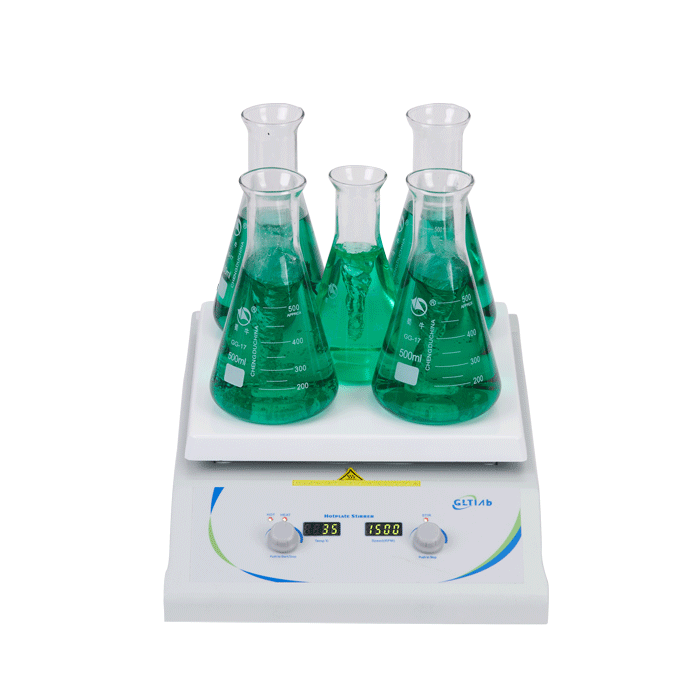Understanding Hotplate Materials and Heating Efficiency
Hotplates are essential tools in laboratories and industrial settings, and their performance depends heavily on the materials used for their construction. The top surfaces of hotplates are commonly made from ceramic, enamel-coated ceramic, or ceramic-coated aluminum. Each of these materials has unique properties that influence their durability, heat resistance, and chemical resistance.
Material Composition and Heat Resistance
Ceramic and Enamel-Coated Ceramic: Ceramic and enamel-coated ceramic hotplates are manufactured through high-temperature baking, typically between 800–1000°C. The enamel-coated ceramic variant is applied to a stainless steel base. While stainless steel can begin to deform at around 200°C, the enamel coating significantly enhances its heat resistance, allowing it to withstand temperatures up to 1000°C. This makes both ceramic and enamel-coated ceramic ideal for high-temperature applications.
Ceramic-Coated Aluminum: Unlike the ceramic and enamel-coated ceramic options, ceramic-coated aluminum hotplates are manufactured at much lower temperatures, around 250°C. The coating consists of ceramic powder and organic coating reagents. Due to aluminum’s relatively low melting point of approximately 663°C, it cannot be coated using enamel. Additionally, ceramic-coated aluminum has lower chemical resistance, particularly against organic solvents. However, when handling volatile corrosive substances, there is no significant difference in performance between the materials. In standard laboratory conditions, it is unlikely that high-concentration substances would be heated on a regular stirrer hotplate.
Heat Conductivity and Efficiency
Although aluminum cannot be heated beyond 500°C, it possesses excellent heat conductivity. Unless a ceramic hotplate is made entirely of aluminum oxide (which is fragile, highly heat-resistant with a melting point of 2000°C, and very expensive), its thermal conductivity remains much lower than that of aluminum. For reference, enamel has a thermal conductivity of only 0.81 W/mK, whereas aluminum boasts an impressive 237 W/mK. As a result, ceramic-based hotplates require significantly higher power input to achieve the same heating speed as aluminum-based counterparts.
A common misconception is that setting a higher temperature leads to faster heating. In reality, this only holds true for solutions with extremely high boiling points (above 500°C), which are rarely encountered. The key factor in heating performance is power density—the amount of power applied per unit area. To accurately assess heating efficiency, experiments must be conducted to compare the heating times of equal volumes of liquid under identical conditions.
Conclusion
Selecting the right hotplate material and heating element is crucial for achieving optimal heating efficiency and chemical resistance. While ceramic and enamel-coated ceramic hotplates are suitable for high-temperature applications, ceramic-coated aluminum offers better heat conductivity despite its lower heat tolerance. Additionally, a well-designed heating element significantly enhances performance. By integrating an easy-to-use calibration process, our hotplates provide a level of convenience and reliability that is unmatched in the market.

